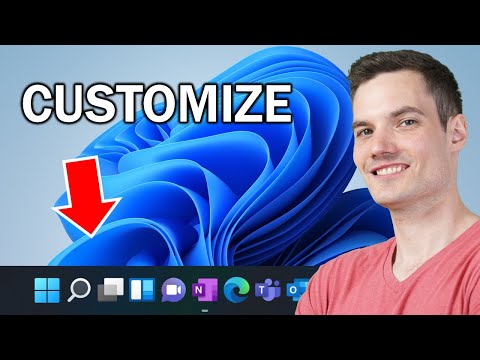How to customize the taskbar

Introduction to Customizing the Taskbar
The taskbar is a fundamental part of the user interface in modern operating systems, offering quick access to essential functions, notifications, and running applications. Customizing the taskbar allows you to tailor its appearance and functionality to suit your workflow and preferences. This guide covers how to customize the taskbar in Windows 10, macOS, and Ubuntu Linux, providing step-by-step instructions for each operating system.
Windows 10
Step-by-Step Guide to Customize the Taskbar in Windows 10
Step 1: Access Taskbar Settings
- Right-click on the Taskbar:
- Right-click on any empty space on the taskbar to open a context menu.
- Navigate to Taskbar Settings:
- From the context menu, click on “Taskbar settings.” This opens the Taskbar settings page in the Settings app.
Step 2: Customize Taskbar Options
- Choose Taskbar Behaviors:
- In the Taskbar settings, you can customize various options such as:
- Lock the taskbar: Prevents accidental changes to the taskbar’s position or size.
- Automatically hide the taskbar in desktop mode: Allows the taskbar to hide when not in use, maximizing screen space.
- Use small taskbar buttons: Reduces the size of icons on the taskbar to conserve space.
- In the Taskbar settings, you can customize various options such as:
- Select Taskbar Location:
- If desired, you can change the position of the taskbar by clicking on the dropdown menu under “Taskbar location on screen” and selecting a new location (bottom, left, right, top).
- Pin Apps to Taskbar:
- To pin apps to the taskbar for quick access, open the app, right-click on its icon on the taskbar when it appears, and select “Pin to taskbar.”
- Customize Notification Area:
- Click on “Turn system icons on or off” to choose which system icons appear on the taskbar notification area. You can also adjust notification settings by clicking on “Select which icons appear on the taskbar.”
- Adjust Taskbar Toolbars (Optional):
- Under the “Taskbar” settings, you can add or remove toolbars by right-clicking on an empty space on the taskbar, hovering over “Toolbars,” and selecting the desired toolbar (e.g., Address, Links).
- Taskbar Preview (Optional):
- Use the “Taskbar” settings to preview changes to the taskbar appearance and behavior in real-time before applying them.
- Apply and Save Changes:
- Once you’ve customized the taskbar to your preferences, click “Apply” and then “OK” to save the changes.
macOS
Step-by-Step Guide to Customize the Dock in macOS
Step 1: Access Dock Preferences
- Open System Preferences:
- Click on the Apple logo in the top-left corner of the screen and select “System Preferences” from the dropdown menu.
- Go to Dock Preferences:
- In the System Preferences window, click on “Dock.” This opens the Dock preferences where you can customize the appearance and behavior of the Dock.
Step 2: Customize Dock Options
- Choose Dock Position:
- In the Dock preferences, you can customize various options such as:
- Size: Adjust the size of icons in the Dock.
- Magnification: Enable magnification to enlarge icons when you hover over them.
- Position on screen: Change the location of the Dock (bottom, left, right).
- In the Dock preferences, you can customize various options such as:
- Add or Remove Applications:
- To add applications to the Dock, drag their icons from the Applications folder or desktop to the Dock. To remove an application, drag its icon out of the Dock.
- Customize System Preferences:
- Click on “Preferences” to customize which applications and system items appear in the Dock, such as the Finder, Downloads folder, and minimized windows.
- Dock Preview (Optional):
- Use the Dock preferences to preview changes to the Dock appearance and behavior in real-time before applying them.
- Apply Changes:
- Once you’ve customized the Dock to your preferences, close the System Preferences window. Changes are applied immediately.
Ubuntu Linux
Step-by-Step Guide to Customize the Dock in Ubuntu Linux
Step 1: Access Dock Settings
- Open Settings:
- Click on the “Activities” button in the top-left corner of the screen (or press the Windows key), and type “Settings.” Open the “Settings” application.
- Navigate to Dock Settings:
- In the “Settings” application, click on “Dock.” This opens the Dock settings where you can customize the appearance and behavior of the Dock.
Step 2: Customize Dock Options
- Choose Dock Position:
- In the Dock settings, you can customize various options such as:
- Icon size: Adjust the size of icons in the Dock.
- Behavior: Enable or disable features like icon bouncing for notifications.
- Position on screen: Change the location of the Dock (left or bottom).
- In the Dock settings, you can customize various options such as:
- Add or Remove Applications:
- To add applications to the Dock, open the application, right-click on its icon in the Dash (application launcher), and select “Add to Favorites.” To remove an application, right-click on its icon in the Dock and select “Remove from Favorites.”
- Customize Appearance:
- Use additional settings to customize the appearance of the Dock, such as transparency or animation effects.
- Dock Preview (Optional):
- Use the Dock settings to preview changes to the Dock appearance and behavior in real-time before applying them.
- Apply Changes:
- Once you’ve customized the Dock to your preferences, close the Settings window. Changes are applied immediately.
Conclusion
Customizing the taskbar or Dock allows you to optimize your workspace and enhance productivity by organizing frequently used applications, adjusting size and position, and enabling additional features specific to your workflow. Whether you’re using Windows 10, macOS, or Ubuntu Linux, the process involves accessing settings specific to each operating system and selecting options that suit your preferences.
Experiment with different settings and configurations to create a taskbar or Dock layout that maximizes efficiency and reflects your unique workflow style. Regularly review and adjust your taskbar or Dock settings to accommodate changing needs and optimize your computing experience.




